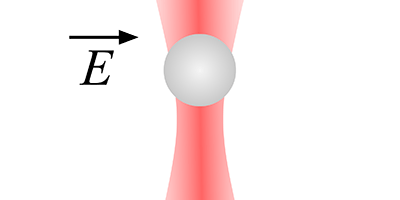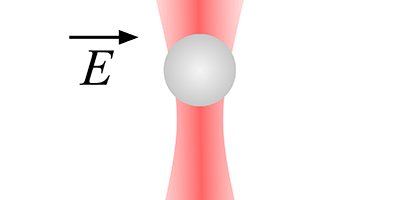Searching for Millicharged Particles
Some extensions of the standard model of particle physics predict the existence of particles with positive and negative charges far less than . Searches for these so-called millicharged particles in terrestrial matter (as opposed to astrophysical environments) have so far only been sensitive to charges as small as . Now, researchers in Giorgio Gratta’s group at Stanford University, California, have extended this search to charges with values as low as by looking for their possible effect on tiny, suspended dielectric spheres in an oscillating electric field. The researchers reported that if the hypothetical particles exist, they have an abundance of no more than per nucleon in the material tested.
In a series of repeated experiments, Gratta and his colleagues suspended a silica sphere, about 5 micrometers in diameter, in an optical trap. After carefully removing any integer charges on each sphere with ultraviolet light, they applied an ocillating voltage across the optical trap and used lasers to detect tiny deviations in the microsphere’s position that could result from electrostatic forces on the millicharged particles. The main limit to the charge sensitivity is any asphericity, or other inhomogeneity, in the silica spheres. The setup, which is sensitive to forces of less than an attonewton, could also be used to search for deviations from Newtonian gravity on length scales comparable to the size of the microspheres.
This research is published in Physical Review Letters.
–Katherine Kornei
Correction (18 December 2014): An earlier version incorrectly attributed the figure to Giorgio Gratta.





